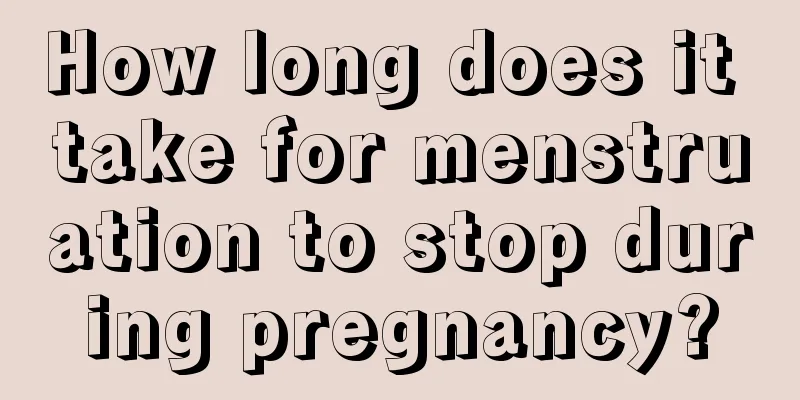How to calculate the contraceptive cycle

|
For couples, if they do not plan to have children in the near future, timely contraception is very important. At this time, if you want to achieve a good contraceptive effect, in addition to using some contraceptive tools, you must also understand some contraceptive cycles, so that you can achieve a certain contraceptive effect without taking contraceptive measures. Therefore, the calculation of the contraceptive cycle is also very important. Let’s take a look at how to calculate the contraceptive cycle. Ovulation calculation method 1: estimation method Usually, women ovulate about 2 weeks (12-16 days) before their next menstrual period. Therefore, you can calculate it yourself based on the rules of your previous menstrual cycles. However, the ovulation period may change due to the influence of environment, disease, mood and medication, so the calculation of ovulation date should be based on actual conditions. Ovulation calculation method 2: menstrual date calculation method It is believed that each ovulation should occur about 14 days before menstruation, so the 5 days before ovulation to 5 days after ovulation are called "ovulation day". However, this method is less reliable because most women have irregular periods. In comparison, the first two methods are more reliable, but somewhat troublesome. Here we introduce you to a simple and more reliable calculation method, hoping it will be helpful to you. The calculation formula is: The first day of ovulation = the number of days in the shortest menstrual cycle minus 18 days The last day of ovulation = the longest menstrual cycle minus 11 days Before using this formula for calculation, the individual is required to observe and record his or her menstrual cycle for 8 consecutive times to obtain the longest and shortest number of days in his or her menstrual cycle. The numbers obtained by substituting them into the above formula represent the beginning and end time of the woman's "ovulation period" respectively. (The menstrual cycle is calculated from the first day of the current menstrual period to the first day of the next menstrual period) For example, the longest menstrual cycle of a woman of childbearing age in the first 8 months is 30 days and the shortest is 28 days. Substituting the formula into the formula is: Ovulation day 1 = 28 days - 18 days = 10 days The last day of ovulation = 30 days - 11 days = 19 days That is: this woman's "ovulation period" starts on the 10th day of this menstruation and ends on the 19th day of this menstruation. If you observe that your menstruation is very regular: once every 28 days, then you can set the longest and shortest days of your menstrual cycle to 28 days. Substituting them into the formula, you can calculate your "ovulation period" as: day 10-17 of this menstrual period. This calculation method takes the first day of the current menstruation as the base point and counts the days forward, rather than taking the next menstruation as the base point and counting backwards, so it is not easy to make mistakes. After finding out the "ovulation period", if you want to get pregnant, you can start from the first day of the "ovulation period" and have sexual intercourse every other day for several months, and you are very likely to get pregnant. If you don’t want to get pregnant, you have to miss the “ovulation period” to have sex. |
<<: How to count the days of pregnancy
>>: How many months is considered the third trimester?
Recommend
Drinking hot water can raise your body temperature and even help you lose weight? Don’t believe it anymore
Hello, this is Science Popularization China. Rece...
More and more people are diagnosed with thyroid problems. Is it caused by staying up late and being under a lot of stress?
Many people have similar doubts: going to the hos...
What are the symptoms of mastitis? Understanding is for better prevention
In recent years, more and more women have suffere...
Burn My Calories: Why can’t I lose weight even though I exercise every day?
Many people rely on exercise to lose weight, but ...
Menstruation was delayed for ten days and I was not pregnant
There are various reasons for delayed menstruatio...
How long should you rest after an artificial abortion and what should you pay attention to?
We all know that many female friends choose to ha...
How to make dried tea tree mushrooms delicious? How to quickly soak tea tree mushrooms
Dried tea tree mushrooms are made from fresh tea ...
How to get rid of side breasts?
Women's breasts are not only for viewing in d...
Vaccinations, hearing screening, heel pricks, things parents of newborns need to know!
Author: Li Guiying, deputy chief nurse, Beijing A...
Can hot towel compress relieve breast hyperplasia?
Breast diseases are very common in life and emerg...
What are the effects of hypothyroidism during pregnancy on the baby?
Doctors have always emphasized that if a couple w...
What is the reason for rough skin in women?
I believe that all women want their skin to be de...
My breasts are softer than usual. Is this because I'm pregnant?
Many women have small breasts, so they want them ...
The six most common dirty things women do
When it comes to women's dirty things, what d...
Sweating and insomnia during menopause
When women reach menopause, they have already ent...









